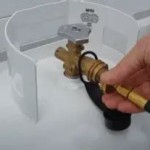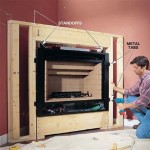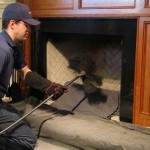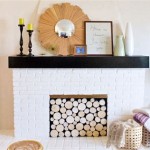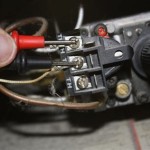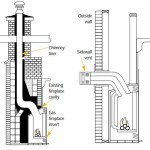How To Paint a Brick Fireplace Distressed
Painting a brick fireplace can dramatically alter the aesthetic of a room, shifting its ambiance from rustic to modern, or vice versa. Achieving a distressed look on painted brick adds character and depth, creating a visually appealing focal point. This article offers a comprehensive guide on how to successfully paint a brick fireplace and achieve a distressed finish.
Before commencing any painting project, thorough preparation is crucial. The lifespan and appearance of the painted finish hinge significantly on the initial steps. Ignoring proper preparation can lead to adhesion issues, uneven color application, and ultimately, a less-than-desirable outcome.
Preparing the Brick Fireplace for Painting
The initial step involves a comprehensive cleaning of the brick surface. Over time, fireplaces accumulate soot, dust, and grease, which can hinder paint adhesion. Begin by removing any loose debris with a wire brush. This will dislodge any flaky paint or mortar. Following the dry brushing, thoroughly scrub the brick with a solution of warm water and trisodium phosphate (TSP). TSP is a powerful cleaner that effectively removes grease and soot. Ensure to wear protective gloves and eyewear when handling TSP.
After scrubbing, rinse the brick thoroughly with clean water to remove any remaining TSP residue. Allow the brick to dry completely. This might take several days, depending on the humidity levels in the environment. A moisture meter can be used to verify the dryness of the brick. The moisture content should be within an acceptable range for painting, as specified by the paint manufacturer.
Once the brick is dry, inspect the mortar joints. If any mortar is crumbling or missing, it should be repaired. This involves raking out the loose mortar and applying new mortar with a pointing trowel. Allow the new mortar to cure completely before proceeding with painting. Typically, mortar requires several days to fully cure.
Mask off any areas that should not be painted, such as the surrounding wall or the firebox opening. Use painter’s tape and drop cloths to protect these surfaces from accidental paint splatters.
Painting the Brick Fireplace
Selecting the appropriate paint is critical for achieving a durable and aesthetically pleasing finish. Latex paint formulated for masonry is generally recommended. This type of paint is breathable, allowing moisture to escape from the brick, which helps prevent the paint from blistering or peeling. Consider using a paint with a matte or eggshell finish, as these sheens tend to work well with the distressed look. The primer should also be specifically designed for masonry and have excellent adhesion properties.
Begin by applying a coat of primer to the entire brick surface. Primer creates a uniform surface for the paint to adhere to, ensuring even color and better longevity. Use a brush to apply the primer into the mortar joints and crevices. A roller can be used for the flatter surfaces of the brick. Allow the primer to dry completely according to the manufacturer's instructions. This typically takes several hours.
Once the primer is dry, apply the first coat of paint. Use the same technique as with the primer, applying paint into the mortar joints with a brush and using a roller for the flatter surfaces. Allow the first coat of paint to dry completely before applying the second coat. The drying time will vary depending on the type of paint and the environmental conditions.
Apply a second coat of paint for complete coverage and color consistency. Allow the second coat to dry completely before moving on to the distressing phase.
Creating the Distressed Finish
Several techniques can be employed to achieve a distressed look on painted brick. The choice of technique depends on the desired level of distress and the overall aesthetic. Each technique offers a unique visual effect.
Sanding: Sanding is a common technique for creating a distressed look. Use sandpaper (80-120 grit) to gently sand away the paint in certain areas. Focus on areas that would naturally wear over time, such as edges, corners, and raised surfaces. Vary the pressure and sanding direction to create a more natural and random effect. After sanding, wipe away the dust with a damp cloth.
Wet Rag Technique: This technique involves wiping away paint before it dries completely. After applying a thin coat of paint, use a damp rag to gently wipe away some of the paint, revealing the underlying brick or the primer layer. This creates a faded and weathered look. Experiment with different amounts of pressure and wiping patterns to achieve the desired effect.
Dry Brushing: This technique involves using a dry brush with very little paint on it to create a textured, weathered look. Dip the brush lightly into the paint, then wipe off most of the paint on a paper towel. Apply the remaining paint to the brick in light, irregular strokes. This technique adds subtle texture and depth to the painted surface. Consider using a contrasting color for the dry brushing to enhance the distressed effect.
Chipping and Scraping: For a more rustic and aged appearance, consider chipping and scraping the paint. Use a putty knife or a similar tool to carefully chip away small pieces of paint in random areas. This creates a more dramatic and weathered effect. After chipping and scraping, lightly sand the edges of the chipped areas to soften the look and prevent sharp edges.
After distressing, consider applying a sealant to protect the painted finish. A matte sealant will preserve the distressed look and provide a durable, washable surface. Apply the sealant according to the manufacturer’s instructions.

How To Distress A Painted Brick Fireplace

How To Distress A Painted Brick Fireplace
How To Update A Brick Fireplace With Chalk Paint Diy Beautify Creating Beauty At Home
How To Update A Brick Fireplace With Chalk Paint Diy Beautify Creating Beauty At Home

How To Update A Brick Fireplace With Chalk Paint Diy Beautify Creating Beauty At Home

How To Update A Brick Fireplace With Chalk Paint Diy Beautify Creating Beauty At Home
How To Update A Brick Fireplace With Chalk Paint Diy Beautify Creating Beauty At Home

How To Age And Distress Bricks Brick Fireplace Makeover Red Fireplaces

How To Whitewash A Brick Fireplace Suzanne Bagheri The Painted Drawer Furniture Chalk Paint Tutorials

Limewashing A Brick Fireplace Vs Paint Whitewash German Schmear
Related Posts


